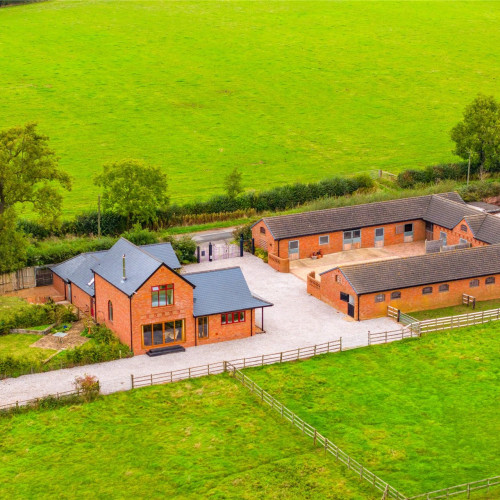Here are some of the key things to consider before investing in an equestrian home...
Acreage
A paddock will be top of the priority list and you will need to allow between 1 and 1.5 acres of land per horse. If there is more land than the minimum requirement, your horse can graze on half of the land with the remaining half left to rest. Giving the land time to recover from over usage or a bad winter will save money in the long run, as it will avoid the need to rent land elsewhere.
Casual or competitive rider
A large determining factor when it comes to choosing the right property depends on your requirements as a rider. If you are a casual weekend rider, you may well need less land. A competitive rider would require space for heavy goods vehicles or trailers, as well as a manege or paddock to practice for showjumping, dressage or polo.
Quality of the land
Horses need good-quality land, so the quality of the land is an important consideration. Land with free-draining soil is ideal as it is manageable throughout the year. Good drainage is crucial to keeping future expenses under control. If your field is waterlogged, horses will be stuck in the stables all day meaning more mucking out and higher food costs.
Outbuildings
Horses require lots of equipment, therefore outbuildings are essential, namely stables and a tack room with electricity and water. Stables should face away from the direction of wind where possible and stalls should ideally be no smaller than 12’x12’. In an ideal world, the stables and the tack room would be close enough to the house to be in view and earshot. If the property doesn’t come with stables, consider the cost of building, as well as the fact that you’ll have to apply for planning permission.
Location
For many equestrian buyers, the family home comes second to the horse facilities. Keep your lifestyle in mind before making a final decision. For example, are there accessible transport routes and train stations to allow you to travel easily or commute to work? Are there local amenities nearby? If you are a seasoned competitor, think about the location of shows, racecourses or riding events and whether the location of the property is a suitable fit for your needs. If you want to be close to a racing or eventing hub, you will pay a premium for acreage. By looking slightly further afield, you are likely to get more land for your money.
Accessibility
Some of these properties can only be accessed via winding country lanes, so you will need to ensure there are clear access points, that there is ample space to navigate a horse trailer to and from the property, as well as sufficient space to turn around. Riding out from the property means you may need to negotiate access across a neighbouring farmer’s land to bridal paths, roads and tracks.
Water access
The average horse drinks between five and ten gallons of water per day, so good water should be high up on your list of priorities. A sink in your barn is vital to ensure that water easily reaches both pastures and stables. You don’t want to be carrying gallons of water across acres of land.
If you’re planning on a move to an equestrian property we have several that could be a match for your needs. Call us to chat with our property experts, or if you have a home to sell, book your free market appraisal.
